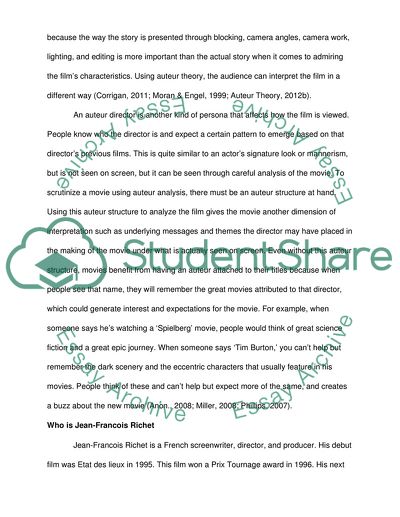Cite this document
(Popular European Cinema in the Light of Jean-Francois Richets Films Essay, n.d.)
Popular European Cinema in the Light of Jean-Francois Richets Films Essay. Retrieved from https://studentshare.org/visual-arts-film-studies/1785079-examine-the-important-of-the-auteur-in-popular-european-cinemadiscuss-in-relation-to-one-module-filmand-at-least-one-other-by-the-same-director
Popular European Cinema in the Light of Jean-Francois Richets Films Essay. Retrieved from https://studentshare.org/visual-arts-film-studies/1785079-examine-the-important-of-the-auteur-in-popular-european-cinemadiscuss-in-relation-to-one-module-filmand-at-least-one-other-by-the-same-director
(Popular European Cinema in the Light of Jean-Francois Richets Films Essay)
Popular European Cinema in the Light of Jean-Francois Richets Films Essay. https://studentshare.org/visual-arts-film-studies/1785079-examine-the-important-of-the-auteur-in-popular-european-cinemadiscuss-in-relation-to-one-module-filmand-at-least-one-other-by-the-same-director.
Popular European Cinema in the Light of Jean-Francois Richets Films Essay. https://studentshare.org/visual-arts-film-studies/1785079-examine-the-important-of-the-auteur-in-popular-european-cinemadiscuss-in-relation-to-one-module-filmand-at-least-one-other-by-the-same-director.
“Popular European Cinema in the Light of Jean-Francois Richets Films Essay”, n.d. https://studentshare.org/visual-arts-film-studies/1785079-examine-the-important-of-the-auteur-in-popular-european-cinemadiscuss-in-relation-to-one-module-filmand-at-least-one-other-by-the-same-director.


